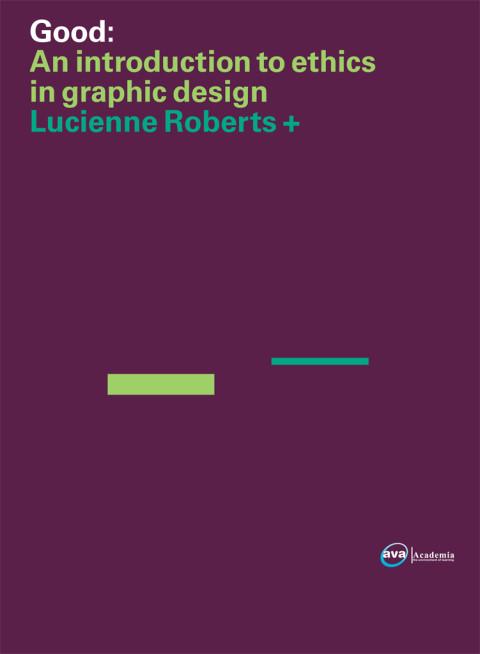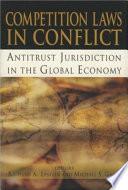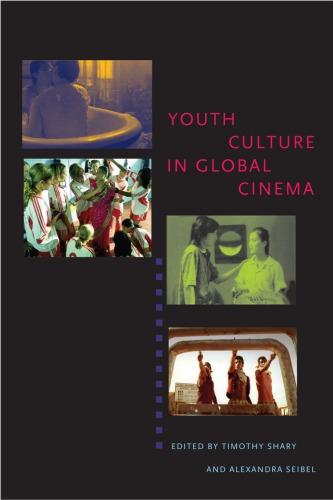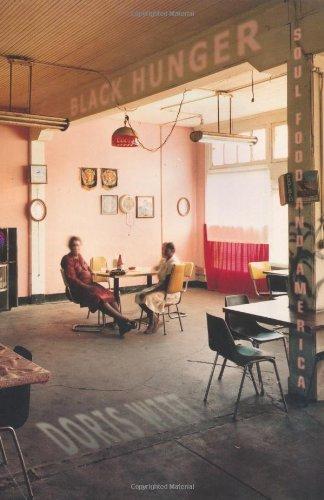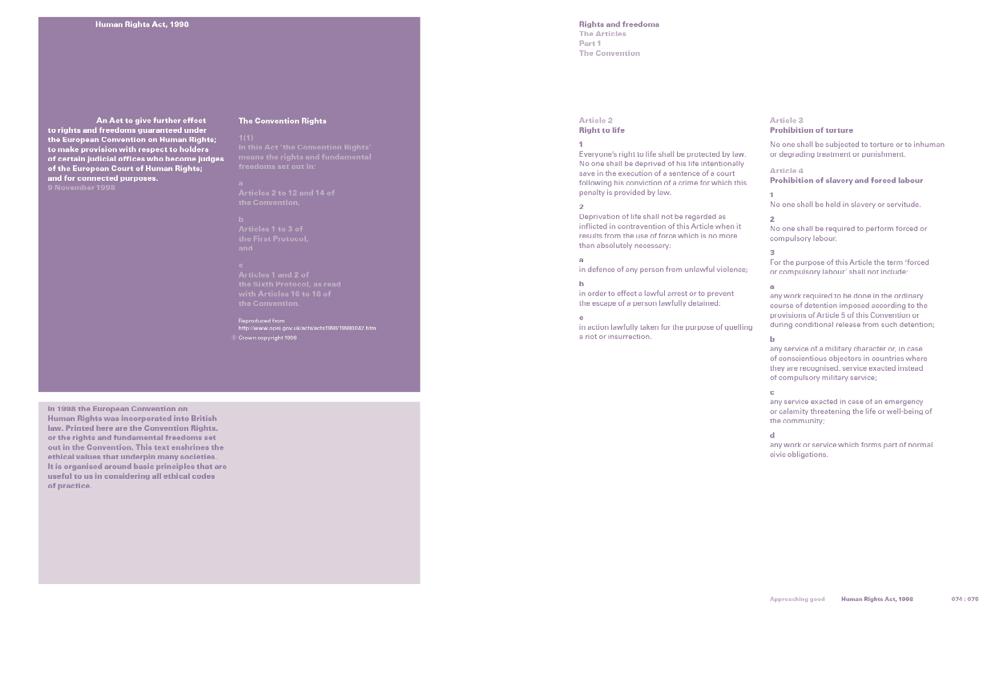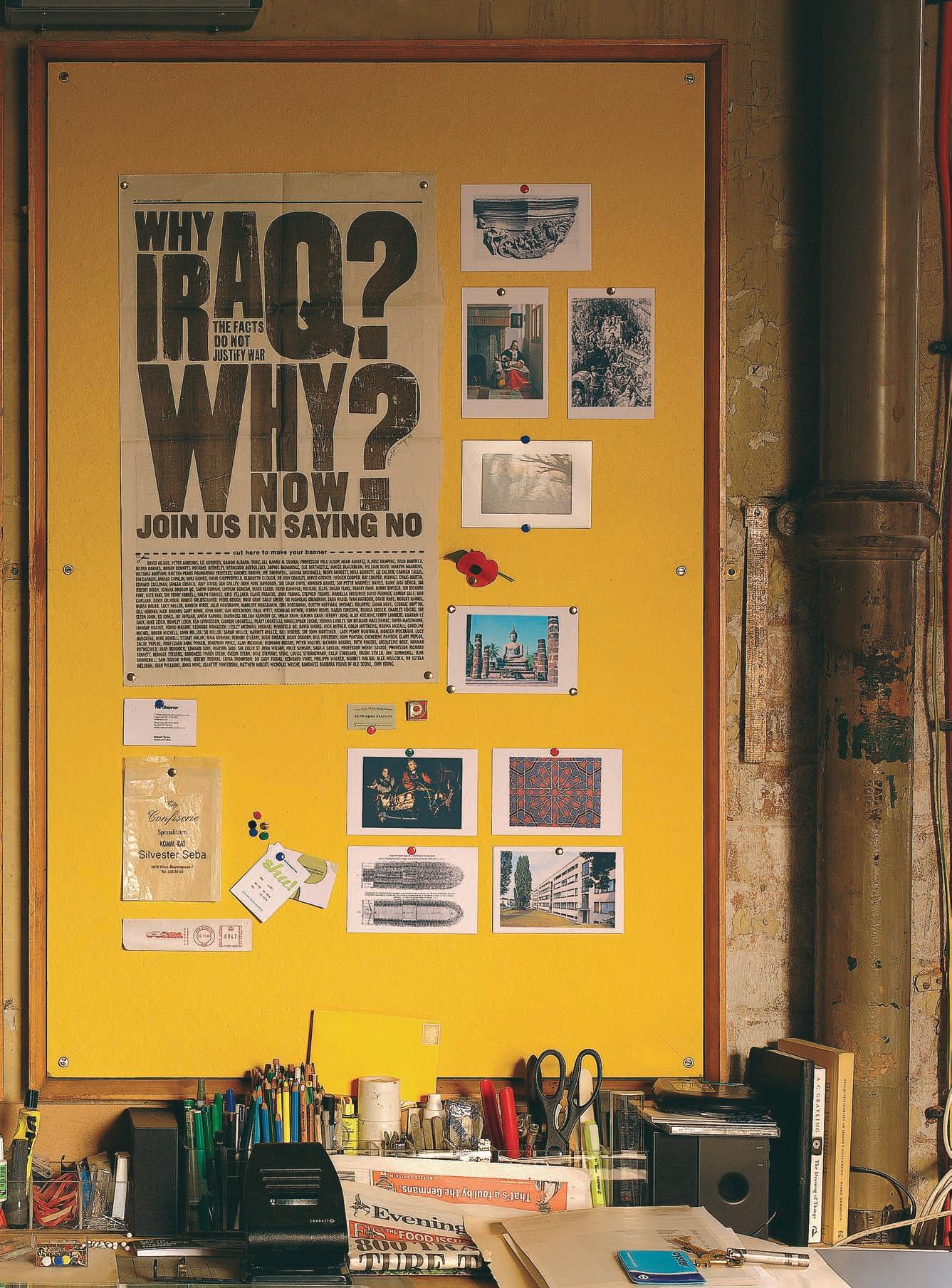Good: An introductiontoethics ingraphic design
Lucienne Roberts +
Moralityis of course part of ethics, but it is not the whole of ethics. Moralityis about some of our responsibilities to others, whereas ethics is about one’s ‘ethos’, one’s whole wayof life. It is about what sort of person one is.
AnthonyGrayling
The Hear t of Things
published by
AVA Publishing SA
Rue des Fontenailles 16
Case Postale
1000 Lausanne 6
Switzerland
t: +41 786 005 109
e: enquiries@avabooks.ch
distributed by
ex-North America
Thames & Hudson
181a High Holborn
London WC1V 7QX
United Kingdom
t: +44 20 7845 5000
f: +44 20 7845 5055
e: sales@thameshudson.co.uk www.thamesandhudson.com
USA and Canada
Watson-Guptill Publications 770 Broadway New York New York 10003
USA
f: +1 646 654 5487
e: info@watsonguptill.com www.watsonguptill.com
English Language Support Office
AVA Publishing (UK) Ltd
t: +44 1903 204 455
e: enquiries@avabooks.co.uk
© AVA Publishing SA 2006
All rights reserved. No part of this publication may be reproduced, stored in a retrieval system or transmitted in anyform or byanymeans, electronic, mechanical, photocopying, recording or otherwise, without permission of the copyright holder.
ISBN 2 940373 14 0 and 9 782940373 14 7
10 9 8 7 6 5 4 3 2 1
designed by Lucienne Roberts sans+baum
production and separations by AVA Book Production Pte Ltd
Singapore
t: +65 6334 8173
f: +65 6259 9830
e: production@avabooks.com.sg
Good:
An introduction to ethics in graphic design
Lucienne Roberts +
Cons ider this simple conundrum: is it possible to be a bad good designer or a good bad des igner for that matter? If the answer is ‘yes’ then which is preferable and what does this reveal about the relationship of ethics to graphic design?
Graphic design is in ethical flux.There is disenchantment wi th style-led solutions and the pursuit of self-expression alone. Manifestos and themed publications have raised awarenessof‘design for good’, but the debate about what the term means is in its infancy.
This book sets out a basis for designers,educators and students to consider the values and the potential of the profession. Des igners are people.The decisions we make define who we are.Our ethical choices help shape the world.
017
Section 1: Making good Visual art has for centuries been used to persuade, educate or control. With greater freedom, artists have deliberated about the appropriate use of their skills. This brief historical surveystarts with art and craft, and concludes with design. It draws on different periods and cultures; from Egyptian kings to Renaissance Italy, eighteenth-centurypolitical satire to Soviet Russia, William Morris and First Things First.
032
Issues raised
Using this book
008
Declaring an interest
033
Section 2: Approaching good In this theoretical section, four interviewees consider ethics in relation to philosophy, the law, theologyand politics, and reflect on how theorycan impact on the practice of graphic design. The section includes a chronological glossaryof ethical thought and concludes with the Convention Rights of the European Convention on Human Rights as included in the British Human Rights Act.
034
Philosophy
Anthony Grayling
044
The law
Jacqueline Roach
050 Theology
Richard Holloway
058
Politics
Delyth Morgan
064
Issues raised
065
Glossaryof ethical thought
Naomi Goulder
Frederik Willemarck
074
Human Rights Act, 1998
The Convention Rights
010
Some useful def initions
011
The parameters of this book 012
Introduction
081
Section 3: Debating good These semi-polemical essays use Section 2 as a starting point to explore five design questions from diverse and unusual perspectives.
082
Should I be nice to everyone?
088
Who should I work for?
094
Is it okayto be happy?
100
Who has the right to judge?
106 What is it worth?
112
Issues raised
113
Section 4: Being good
Five practitioners in design and related fields, consider how ethics impacts on their work. These interviews are interspersed with ten single-page responses to the question ‘Are you a good designer?’.
Furniture and product design/ exhibition design/installations
Are you a good designer?
Paula Scher, Oded Ezer, Divya Chadha
Section 5: Doing good Rupert Bassett and Lynne Elvins from A420 consider how designers can make a practical difference. In a series of interviews and workshop sessions, four designers explore the methodologyof Bassett and Elvins’ new guide to sustainable design.
Including each principal contributor ’s suggested reading, an index, credits and acknowledgements.
Are
Using this book
Each section has an opening page that looks like this.
Ethics isn’t a black-and-white subject. Neither is this book – there are lots of greys. This book opens with an introduction and closes with reference material. There are five sections in between. Sections 1, 2 and 3 are theoretical. Sections 4 and 5 are practice-based.
Section 1: Making good An illustrated historysection.
Section 2: Approaching good
A theoretical section that includes four interviews. Each opens with a portrait of the interviewee, followed bytheir interview.
Section 2 also includes a glossaryand the human rights outlined in the British Human Rights Act.
Section 3: Debating good A theoretical section made up of five essays. Each opens with an illustration followed bythe essay.
Section 4: Being good A prac tice-based section including five interviews with practitioners who work in design and related fields.
Section 4 also includes answers byten graphic designers to the question ‘Are you a good designer?’.
Section 5: Doing good A practice-based section that uses a new mapping system to explore sustainabilityin design work.
Section 5 also includes four practice-based interviews.
In all sections cross-referencing information runs across the bottom of the spread. This indicates where to find related and alternative approaches, and highlights glossaryentries that are of interest.
Everyone has baggage that informs their thinking. So, just as politicians have to declare an interest, I thought it would be useful to include something of myhistory.
I am British. I was born in 1962, the only child of parents who were both designers. We three talk a great deal, about everything.
Two aspects of life that have preoccupied me since I was a child are what it means to be ‘good’ and the question of death. I went to a Catholic convent, so it’s not hard to see that there is a correlation here.
Myearlymusings about moralityhave now morphed into an interest in ethics and politics that is independent of religious belief as I do not believe that one is a prerequisite of the other.
I am a graphic designer who also writes about the subject. I consider myself liberal in my attitudes. I believe in tolerance, and resist heavilythe present preoccupation with ‘evil’ –it is reductive and belies the complexityof moralityand ethics. I don’t consider cynicism to be a mark of sophistication. I maybe naïvelyidealistic, but I see this as a sincere and optimistic state of being.
I thought graphic design was worth doing partlybecause I saw it as a political activity. I came to this conclusion as a student, having been inspired byjust a few texts. One was this veryshort piece written by the American typographer Beatrice Warde. It adorned the walls of manyprinters and typesetters right through to the 1980s, when I was a student. Its almost devotional language expresses a message of inclusiveness and it acts as a reminder to all those multitudes involved in print, and now visual communication, that each plays a part in the transmission of knowledge and ideas; one of the most vital human activities imaginable.
First published in 1932 as a broadsheet bythe typefounders Monotype.
Beatrice Warde
This is a printing office
Ethics [noun]
Moral philosophy
Moral principles
Ethical [adjective]
Relating to morals
Morallycorrect
Moral [adjective]
Concerned with goodness or badness of human character or behaviour, or with the distinction between right and wrong
Morals [noun]
Moral behaviour
Good [adjective]
Having the right or desired qualities
Efficient, competent, reliable
Kind, morallyexcellent, virtuous, charitable, well-behaved, enjoyable, beneficial
Right, proper, expedient
Attractive
Good [noun]
That which is good; what is beneficial or morallyright
Right [adjective]
Just, morallyor sociallycorrect
Right [noun]
That which is morallyor sociallycorrect or just, fair treatment
All definitions taken from The Oxford Compact English Dictionary
The
Good isn’t…
…a showcase book because easilyassimilated projects that are high on visual impact are not necessarilyexamples of ethical graphic design.
…a philosophybook, nor is it a theologybook or a political treatise, but it does draw on all these subjects for its ideas.
…prescriptive because it would be a denial of the complexityof the subject if this were a how-to-do or what-to-think book.
…condemning because although it’s important to establish ethical codes of practice, it’s not easyto applythem consistently.
…evangelical because there are lots of different versions of good.
…sanctimonious because that will just make you want to be bad.
Good is…
…about ideas. Not ‘design ideas’, but life ideas. Please give them time. Sit in a comfortable chair, with a favourite drink and an expansive view and contemplate a little. You will find there are manyrewarding detours on the way… Whyam I here? Can I make a difference? Am I the centre of the universe?
Introduction ...good/bad egocentric/altruistic vilify/glorify collective/individual add/subtract monologue/dialogue spiritual/secular artificiality/authenticity economical/luxurious liberty/restraint sanguine/doubtful quiet/loud on cloud nine/down in the dumps close/open straightforward/hazy well-to-do/hard up snuff out/ignite cautious/adventurous needy/independent zealous/chilled in the moment/miles away inclusive/exclusive prohibit/sanction live and let live/censure distil/prettify reason/emotion ordinary/magical keen/subdued inquisitive/blithe meticulous/happy-go-lucky invigorate/pacify radiate/concentrate right/wrong...
In the recent BBC comedyseries How to Start your own Country, DannyWallace tried to establish his East London f lat as a separate countrycalled Lovely. In this charming and naïve ruse, we were invited to consider how manyof the structures that we either take for granted, or simplydon’t understand, actually work. Along the way, Pentagram designed him a flag, the Bank of England gave advice on currencyand a cardinal at the Vatican advised on moralityand rules. ‘You can’t improve on the Ten Commandments’ said the cardinal, but back in London, Wallace decided he could simplify the whole thing: ‘be good’ – that’s the onlyrule you need.
This sounds simple, but is there a shared understanding of what ‘being good’ means? Without one it’s hard to know if this would make the world lovely. The philosopher GE Moore said that a precursor to defining good conduct is to consider what is meant by‘good’ in general: …if we can arrive at anycertaintyabout this, it will be much easier to settle the question of good conduct; for we all know prettywell what conduct is. This, then, is our first question: What is good? and What is bad? and to the discussion of this question (or these questions) I give the name ethics...[1]
The subject of this book is ethics in a particular context: the activityof design, and specifically graphic design. The intention is to raise consciousness of ethical issues and fuel a debate about ethical graphic design practice. Ethics is a big subject – having narrowed down the territory a bit it is still impossible to provide incontrovertible answers to the complex problems posed.
Coupling ethics with graphic design might seem slightlyabsurd – it’s just a job after all. Without indulging in self-importance or making inflated claims, it is crucial to remember that graphic design is a social activity– byits verynature it affects lots of people and with this comes a responsibility.
Beyond its immediate function, design has an effect upon anyperson who sees or handles it. If the function is to promote a product, service or idea, then the client will expect the effect of the design to be as wide and deep as possible. The impact can be positive or negative. Some individuals will be pleased byour design or may learn something from it. Others will be incensed at what theyperceive to be wasteful and destructive of both the physical environment and the mental health of a largelycaptive audience. The important thing to remember is that the content of our work and the form it is given have repercussions.
What do we mean when we saya piece of design work is ‘good’? Is it something to do with the talent of the designer (perhaps), catching the zeitgeist (definitely), following fashion (too often), or maybe being something of beauty(whatever that means)?
We frequentlyonlypoint to the formal qualities of work when praising its excellence, but these do not exist in isolation. We should consider the needs of the client, the nature of the brief, the intended audience and budgetarylimitations, and the constraints on time. The successful function of our work is often grudginglyincluded as a contributoryfactor in making it a ‘good’ design, but to evaluate design without examining function produces meaningless criticism.
In giving anypiece of graphic work the accolade ‘good’, we should also go beyond its artistic and functional merits and ask questions about its ‘goodness’ in the wider social context. Does it contribute visuallyto the world in which we live? Is the message totallyconcerned with the product or service offered? Is the product or service entirelybeneficial, or could it be harmful in any way? Is the design efficient in its use of materials and production techniques, and can it be disposed of or recycled without causing harm or involving great cost? Were the producers treated fairlyand given proper recompense for the skill and effort provided? These and manyother questions should be part of a designer’s concerns. We are at the centre of an extensive web of ideas and actions, without which the design would not materialise. Manyof these matters fall within the province of ethics or morals, and therefore have philosophical overtones.
The focus of Good
Philosophyis the starting point for this book.
The prac tically-orientated problem-solving designer might worrythat this is too abstract. Bertrand Russell wittilydescribed philosophers as interested in defining questions but not answering them: These philosophers remind me of the shopk eeper of whom I once asked the shortest wayto Winchester. He called to a man in the back premises:
‘Gentleman wants to know the shortest way to Winchester.’
‘Winchester?’ an unseen voice replied. ‘Aye.’
‘Wayto Winchester?’
‘Aye.’
‘Shortest way?’
‘Aye.’
‘Dunno.’
He wanted to get the nature of the question clear, but took no interest in answering it.[2]
However, this book demonstrates that moral philosophyhas absolute relevance to design practice.
Good starts with a brief historical surveyof the increase in freedom, and therefore responsibility, of the artist, craftsperson and then designer. Section 2 presents philosophy, theology, politics and the law as the starting point to ethical investigation. Section 3 tests these notions in relation to graphic design. All three sections are focused on theory.
The last two sections of the book are practicebased. Section 4 is focused on what designers think about ethical design issues and Section 5 on how practice might change in the light of applying ethical ideas. Manyof the ethical dilemmas designers face are the result of design being a commercial enterprise. The main focus of this book is therefore design in this context rather than as a voluntaryactivityor as a form of agit-prop. The work presented is not always ethical and neither are all the opinions expressed.
Is Good an ethical book?
Good is certainlyethical in intention, but onlyto an extent in outcome. Everyone involved has been motivated to share knowledge openlyand put ethics on the design agenda. The content has been thoughtfullyconceived to reflect the mixed views of a diverse set of contributors: men and women, young and old, from different backgrounds and cultures. The contributors have explored the issues with fairness and objectivity. Access to ideas has been at the forefront of everyone’s mind.
Despite time pressures, everyone has been considerate to each other – polite, thoughtful, open and supportive. Fees have been paid promptlyby the publisher and as staged payments throughout the process. Contributions have been acknowledged and credited.
Publishing offers lots of creative opportunities. However, the desirabilityof the work can mean there is minor exploitation. Fees do not match the time taken bycontributors. That said, publishing is a riskybusiness that involves investment upfront, so publishers are understandablymindful of outlay relative to projected sales.
Hopefully, the design of Good will give pleasure. The intention has been to mak e what could be a rather daunting subject visuallyengaging and therefore more accessible and appropriate for its intended audience. However, Good is not accessible to all. It does not use large print for example, although a pdf ver sion using a reduced colour palette is available to be output at larger sizes.
Some sections of the book are printed in onlyone or two colours to demonstrate the visual richness of using fewer colours. The paper is recycled. However, Good was printed in the Far East where waste disposal and employment regulations are not necessarilyas easyto monitor as they are within the EU, for example. This necessitated some use of air freight, although bulk transport has been bysea.
So, Good is ethical and unethical. Conflicting objec tives make publishing ethicallyfraught. We want books that are accessible, educative and visuallyrich or striking. We also want them to be cheap. Under the present system, ethical compromise in making mass-produced books is almost inevitable. Responsibilitylies with us all. Good asks, will change be forced upon us if we don’ t change first?
A positive message
This sounds rather gloomy, but it’s not. Ethics is relativelyunexplored territorywithin graphic design – the overall objective of this book is to encourage enquiry, which hopefullyis a prerequisite to change.
As with manyother professions, graphic design rarelypresents us with huge ethical dilemmas. However, graphic design is part of the fabric of the societyin which we live – even what mayseem like small design decisions affect other people and reveal something of a designer’s broader approach to life. In writing and researching Good it became clear that designers are aware of this responsibility, and are considering ethics in their work, but manyfeel confused about the relationship between professional and personal ethics, and feel too constrained bycircumstance to have the ‘change of heart’ that Ken Garland refers to in Section 5. It seems that designers have accepted a disempowered position. The positive message of this book, however, is that each individual action matters. So, whether it is being thoughtful about what we buy, taking time to vote or spending a few extra moments in friendlyconversation with a printer, it is possible to make a difference.
Good is about what we do, whywe do it and most importantlywhether it is worth doing. To arrive at a hard and fast set of ethical rules is at this stage perhaps too reductive and judgemental, but some kind of consensus about what being an ethical graphic designer really means is beginning to emerge.
[1] GE Moore Principia Ethica 1903
[2] Bertrand Russell Portraits from Memory 1956
Good: An introduction to ethics in graphic design
Section1:Making good/abrief history
RayRoberts +
SophiaGibb picture research /Dave Shaw photography
In all its manyguises, visual art has long been the agent of moral and ethical thought. This pinboard’s apparently random selection of art and design demonstrates clearly how with greater freedom, practitioners have exercised responsibilityin the use of their skills.
This is a brief and compressed look at the historical background to increasing ethical awareness in graphic design. It is biased towards developments in the West, partlybecause trade bysea, the result of European exploration, and western scientific advances were eventuallythe catalysts for mass manufacturing and the advent of graphic design as we know it.
Much of what this section charts is the changing role of ‘artists’ and then ‘designers’, so these terms need to be examined. Remaining evidence tells us that most people who were engaged in forms of artistic activityin the distant past trained and worked as craftspeople. Theyproduced two- or three-dimensional artefacts, ranging from painted images to sculptures, pots, jewellery, furniture and a host of other objects for dailyuse. Much of this work was figurative, and took the form of illustration concerned with belief systems and the organisation of society. Other work was purely decorative or strictlyfunctional. The current notion of the ‘fine artist’ as someone expressing a personal reaction to life, or exploring his or her own imaginative experiences, did not exist. Nearer to our own time, fine artists began to set their own problems for solution and were no longer commissioned byothers. The present-day designer is generallyin a mid-wayposition between craftsperson and artist. Work is commissioned –the problems are generallygiven bya client –but the designer is expected to imbue the resulting solutions with an individual qualitythat is both appropriate to the subject and satisfying to the client.
For the sake of simplicity, for most of this section the term ‘artist’ is used when referring to the maker of artefacts. If there is anyone theme that this section follows historically, it is that as societies have moved towards greater freedom of expression artists of all kinds have emerged as named individuals, valued for their personal contribution, but with increased responsibilityfor the public effect of their work. With this growing involvement in the complex weave of society, the ethical dimension of artists’ work has become more powerfullyevident.
Michael Marriott on artists and designers
AnthonyGrayling on freedom of expression
Taking responsibility for thoughts on…
Examples
Since mankind first settled in organised groups, societies developed degrees of specialisation in producing the necessities of life. Artists were regarded as skilled people who could be used to support, illustrate and document visuallythe authorityof those in power. This power might be militaryor political, but art nearlyalways reflected the higher and mystical guidance of the gods. Earlysocieties were hierarchical and stratified, with slaveryas a base. The majority of artists developed their skills as apprentices to a master, whose knowledge included the making of necessarytools and materials, and an understanding of the prevailing iconography.
For example, the civilisation of ancient Egypt extended over several millennia and expressed its rigid structures in a highlyformalised manner. Sculpture was mainlystatic and contained verticallywithin its basic floor space, while painted work on flat surfaces was two-dimensional. Subject matter consisted mainlyof images of the kings and queens and their exploits, the major and minor gods, and everydayrituals and activities. As beautiful as much of this work is, the effect is of formal stiffness, heavywith symbolism. Artists were controlled bypriestlyclasses, whose interests centred on the promotion of the gods and links between those deities and the kingdom’s rulers.
For a brief period in the reign of Akhenaten, who ruled between 1353–36 BC approximately, a remarkable diversion occurred. Worship was concentrated on a single god, the Aten or sun disc, and Akhenaten encouraged artists to portray himself and his queen, Nefertiti, as human beings rather than demi-gods. Theyare shown hand in hand, playing with their children and venturing out together in their chariot. Given the opportunity, artists revealed an abilityto bring greater naturalism and freedom into their images, together with an awareness of space. This change of direction was short-lived and after the passing of Akhenaten, Egyptian art returned to its previously controlled formality.
To a great extent, this situation continued in the evolving West into the Middle Ages. The balance between religion and politics altered from time to time, but artists had to serve the prevailing belief system. An artist’s abilityto make personal comment, or feel responsibility, was extremely limited. Even the twentieth centuryshowed that forceful dictatorships could repress art forms considered to be decadent or critical.
Classical societies
The growth of less rigid earlysocieties, such as those of classical Greece and Rome, allowed more self-awareness for individuals and permitted some upward movement on grounds of merit. With the huge advantage of a simplywritten phonetic alphabet, more people could read and write and therefore contribute to the exchange and recording of ideas. What we know as philosophy and philosophic method had their origins in this era, when the deep concerns we still have about our beginnings and purpose were subjected to serious debate embracing ethics, morals, logic, science, psychologyand literature. Secular thought ran alongside religion, and the arts became part of the spirit of enquiry. We know the names of individual artists such as Phidias, Praxiteles and Apelles, the favourite painter of Alexander the Great. Subject matter was legendaryor historical, but Hellenistic art also pursued ideas about form and proportion that still exert influence today.
The small citystates of ancient Greece experimented with forms of democracy, but neither this, nor the intellectual enquiries of its thinkers, stopped quarrelling and warfare between them. The growing empire of Rome absorbed these fractious states, but their culture came to permeate Roman thought and art, and was therefore transmitted throughout the empire. The Roman language, Latin, and Roman writing became the channels for Greco-Roman culture, and remained so long after their empire vanished.
The art of Rome was used partlyas an instrument of propaganda, to impress and overawe its peoples. Like Grecian art, its themes included militaryexploits, legends and the lives of the gods. Interestingly, despite the benefits of Roman rule, opposition was felt at manylevels and was expressed in scratched graffiti on public walls by disaffected slaves. Among such scratchings are those from the second centuryAD, which mark a momentous event for the Roman empire, the coming of Christianity. At first repressed and treated with violence, Christianitybecame an underground protest movement with its art drawn on tunnel walls. Eventually, Rome became Christianised and the religion spread throughout its empire. The iconographyof Christianity developed gradually, and the narratives of the Bible became the subject matter of written books and wall paintings.
1
King Akhenaten and Queen Nefertiti creator unknown c1345 BC
One of a small number of surviving images, this depicts King Akhenaten and his Queen Nefertiti with their children. Theyare shown informally, as human beings kissing and touching, within a trulyflowing design cut into limestone in shallow relief. The sculptor demonstrates skills and understanding that were not encouraged in the preceding or following art of ancient Egypt.
2
Illustration of tiles creator and date of tiles unknown illustration byOwen Jones mid-nineteenth century
The wonderful richness and abstract invention of Islamic art are demonstrated in these tiles from the Alhambra Palace in Granada, Spain. While not permitted to depict living beings, artists invented a paraphrase of the natural world in decorative symbols. Religious restriction spurred individual creativity.
3
Leonardo da Vinci
The Virgin of the Rocks c1508
This mysterious yet humane image is verydifferent from the multitude of depictions of the Madonna and Child from the earlyMiddle Ages, as beautiful as many of those were. Warmth of feeling, with grace of design, make this a powerful and memorable realisation, enhanced bya hint of the surreal. This painting has become a personal statement rather than a hierarchical image.
4 Statue of Buddha creator and date unknown
This statue was in the Wat Mahathat, the largest temple in the cityof Sukhothai, the capital of the Sukhothai kingdom of Thailand from the thirteenth to the fifteenth century.The inward and contemplative nature of Buddhism gives images of the Buddha a timeless quality essential to this system of belief. Radical change is not functional.
5 Misericord creator and date unknown
Typical of the half-hidden carvings found in medieval churches, this underside of a misericord in St George’s Chapel, Windsor, England satirises the clergybyshowing a devil pushing three monks into the mouth of hell. This is the underside of the art used as Christian propaganda elsewhere in a church.
6 Pieter de Hooch
A Woman Peeling Apples 1663
De Hooch was one of many Dutch painters who recorded their world of middle-class life in the seventeenth century. Trade in goods and raw materials with the known world, opened up bysea, brought considerable wealth and comfort into the lives of a growing part of the populace, shown in the furniture, textiles, clothes, interior design and domestic architecture. Here are the beginnings of modern life.
7
Joseph Wright of Derby
The Orrery exhibited 1766 Wright, like manyartists of the late Enlightenment, was fascinated bycurrent scientific and industrial developments. Thinkers promoted reason and rationalityas guiding principles, and the advances of industrialisation were seen as exciting and liberating, the start of a revolution in the waylife would be lived. Religion was challenged bynew discoveries and internal dissent.
Making good
Art and religion
With the collapse of the Roman Empire during the fifth centuryAD there followed the so-called Dark Ages, when dissent and strife within Europe led to the loss of much Roman technologyand technical skills. However, the Christian church adopted much of the useful knowledge it found in existing written texts. Manuscripts were kept within the growing number of monasteries and these became the libraries and schools of the church, where theologyand much secular knowledge were defended, nurtured and transmitted. The artistic output of the time was also created largelywithin the monasteries, including fine manuscript books that were mainlyliturgical, alongside copies of earlier classical texts seen as useful and acceptable to the new beliefs.
Artists working in the earlyto late Middle Ages would have been subject to the will of the church, with its view of good and evil and the need for punishment of wrongdoing. Major subjects were the biblical narratives or the lives of Christ and the saints. The audience for such work was mainlyilliterate, and in wall paintings a controlled iconographywas essential for the clear delivery of the Christian message. A typical subject, found in countless versions from larger-than-life murals and sculpture, to exquisite miniatures carved in ivory, or painted on the vellum pages of books, was the image of the Virgin and Child. These obeyed rules governing symbolic content, use of colour and limitations of pose. The guild system, governing working methods, payment, qualityand behaviour, expressed a limited corporate view of ‘ethics’, but the artists who made these images were probablydriven bypersonal conviction, spiced with a dash of fear of those who commissioned the work. What marked out one representation from another was the qualityof the interpretation. There were, however, opportunities for personal expression in medieval art. The borders of illuminated manuscripts and half-hidden architectural corners, are full of amusing and sometimes satirical imagery.
In common with Christianity, all belief systems and religions, such as Buddhism and Islam, seek to exert control upon their adherents, limiting what is acceptable in life and art. For example, strict Islamic law forbids the depiction of living beings. This gives artists an impulsion to develop powerful and decorative abstract art, which reflects the qualities of the visible world without visual imitation. Buddhism has manyvariations and has been followed in countries with different cultures, but its essential emphasis on the contemplative life has meant that its central figure, the Buddha, should express a timeless inward quality, unchanging in the face of change.
Towards a modern world
In Europe during the later Middle Ages and the earlyRenaissance, a new social class, accruing wealth from trade and banking, became politicallyimportant. To establish its status, it commissioned buildings and works of art for public use or display, and for private contemplation. Religious subjects were still important, but scenes from the life of Christ or the saints sometimes included portraits of the commissioning individual or his family, making the picture a sort of passport to the heavenlylife. This fusion of the secular and religious forced new compromises on artists.
The church still used artists, but their personal interpretation of subject matter became more highlyvalued. The Sistine Chapel ceiling and The Virgin of the Rocks, for example, show the power of great artists in making these basic tales so vivid. It was broadlyacknowledged that art could help shape society, but with this came artists’ realisation that theyhad to move with extreme care. Religious and political divisions also forced the taking of sides. Portraits of the powerful assumed much greater importance, with figures placed against or among their possessions. Artists began using their skills to reveal something of the inner life, as well as the appearance of the sitter, but were also under pressure to flatter. Truth, half-truth, and untruth were there to test the artist in new ways: visual editing became a required skill.
During the Renaissance, scientific method began to be used in widening understanding of how the world works. Manyartists, most notably Leonardo da Vinci, combined artistic skills and scientific techniques to probe the nature of things. An uneasyconflict between religion and science led to manyacts of suppression and brutality, making artists’ lives sometimes precarious.
The global and business context to design
Richard Holloway on religion and ethics
Chris de Bode on truth
for thoughts on…
